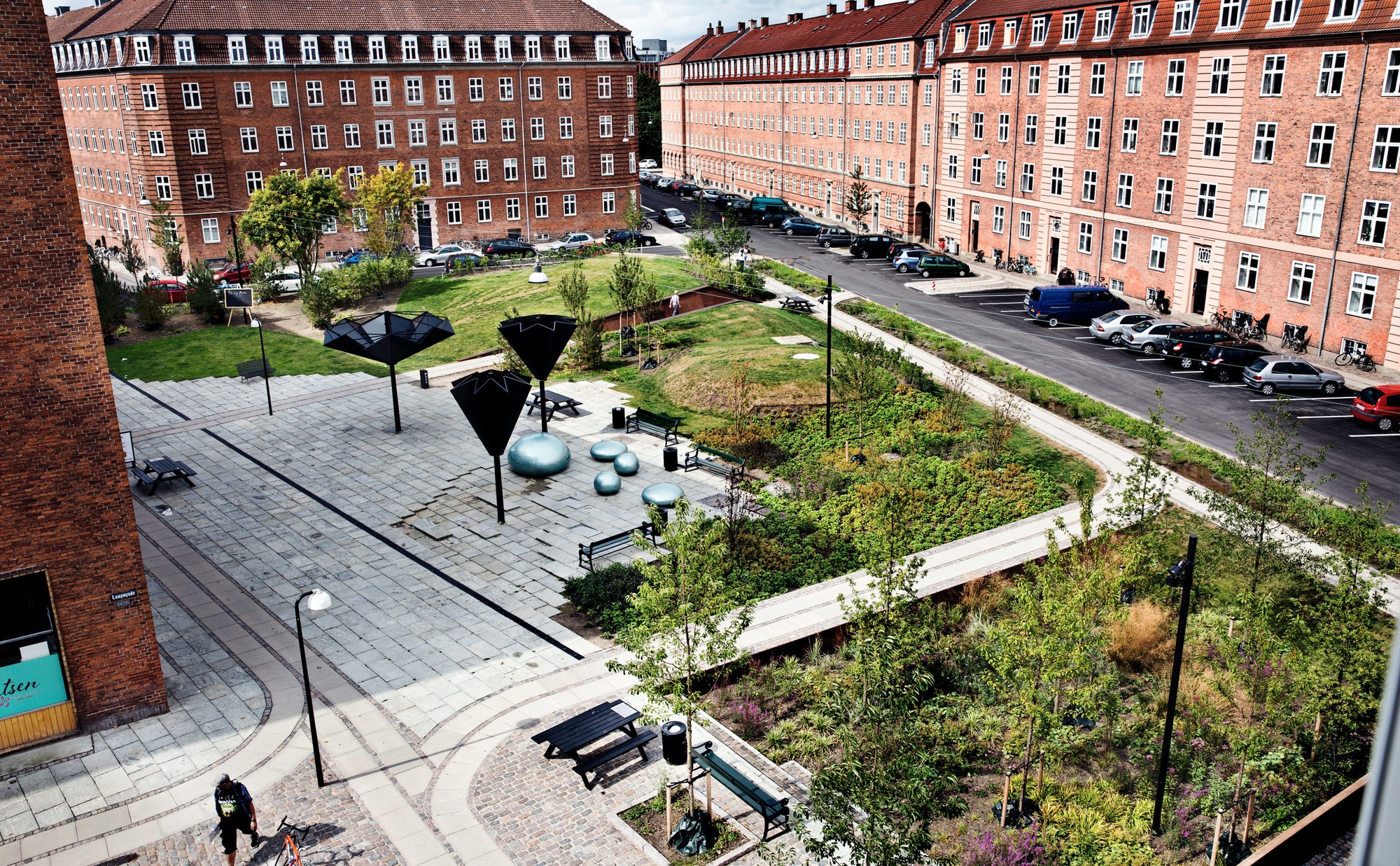In July 2011, a cloud burst hit Copenhagen with 15 centimetres of rain in less than three hours, flooding cellars, streets and key roads. The event is estimated to have cost 6 billion Danish Kroner in damages. Copenhagen’s sewer system is old, and it will be both too expensive and too difficult to expand the capacity of the existing system. Therefore, the City of Copenhagen will now invest in new solutions, which will at the same time make the city’s urban spaces greener and better places to spend time.

Origin/team:
GHB Landskabsarkitekter
Malmos Anlægsgartnere
Orbicon
Feld
Studio for digital crafts & ViaTrafik
Klimakvarter
Teknik- og Miljøforvaltningen; Byens Fysik
Photography:
Steven Achiam, GHB Landskabsarkitekter
Charlotte Brøndum
Resources:
klimakvarter.dk
ghb-landskab.dk
Taasinge Square is an urban space in Copenhagen’s first climate resilient neighbourhood. The square is a green oasis, which both handles large volumes of rainwater and creates a place for the neighbourhood’s residents to meet.
Climate resilience in Taasinge Square is about controlling and retaining as much as possible of the rain that falls around the square. Diverting, evaporating and retaining rainwater from roofs and streets locally, delaying the water flow to the sewers and in this way ensuring that there is capacity in the sewers to cope with the torrential downpours of the future. Altogether, Taasinge Square can delay and percolate rainwater from a surrounding area of 4,300 m2.
In Taasinge Square, terrain as well as vegetation is part of the resilient design which is placed in an urban framework that provides space for local nature to grow willfully without appearing untamed. Rain, wind and sun become a welcome part of the rhythm of the city. Through an involvement process with the local neighbourhood, Taasinge Square has become a living part of the urban environment, and has helped in strengthening familiarity, community and a sense of ownership among the local residents. This engagement provides an ideal basis for the transformation of the whole neighbourhood of Skt. Kjelds, which is to become The Climatic Quarter in Copenhagen, involving resilient landscape design of more streets and squares in the future.








